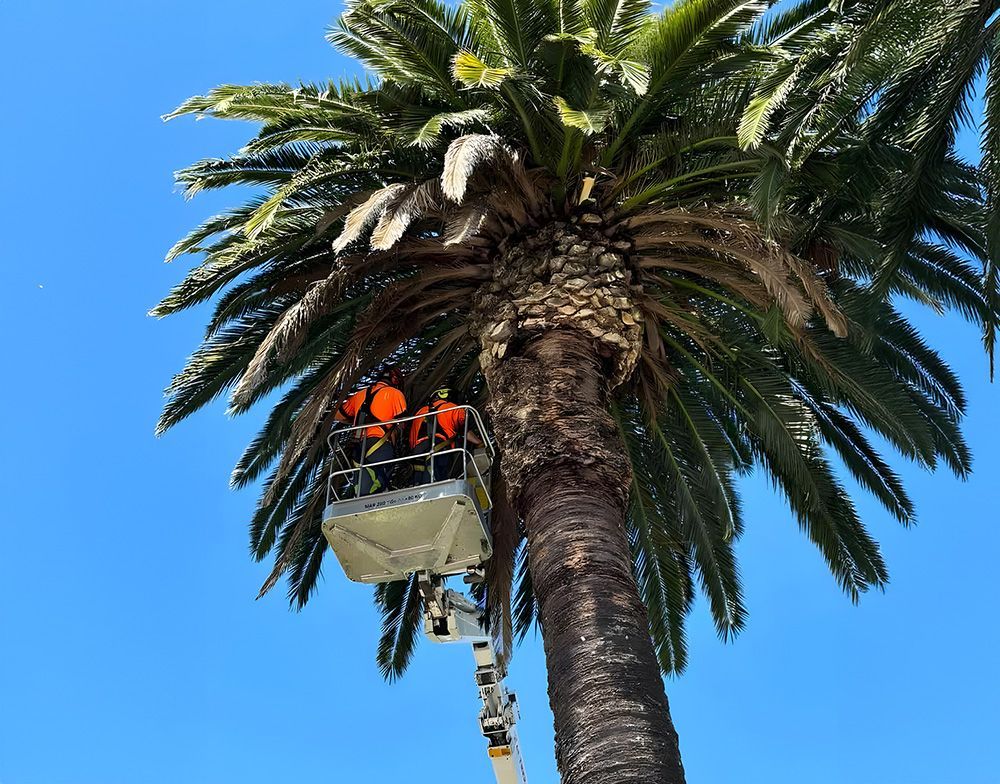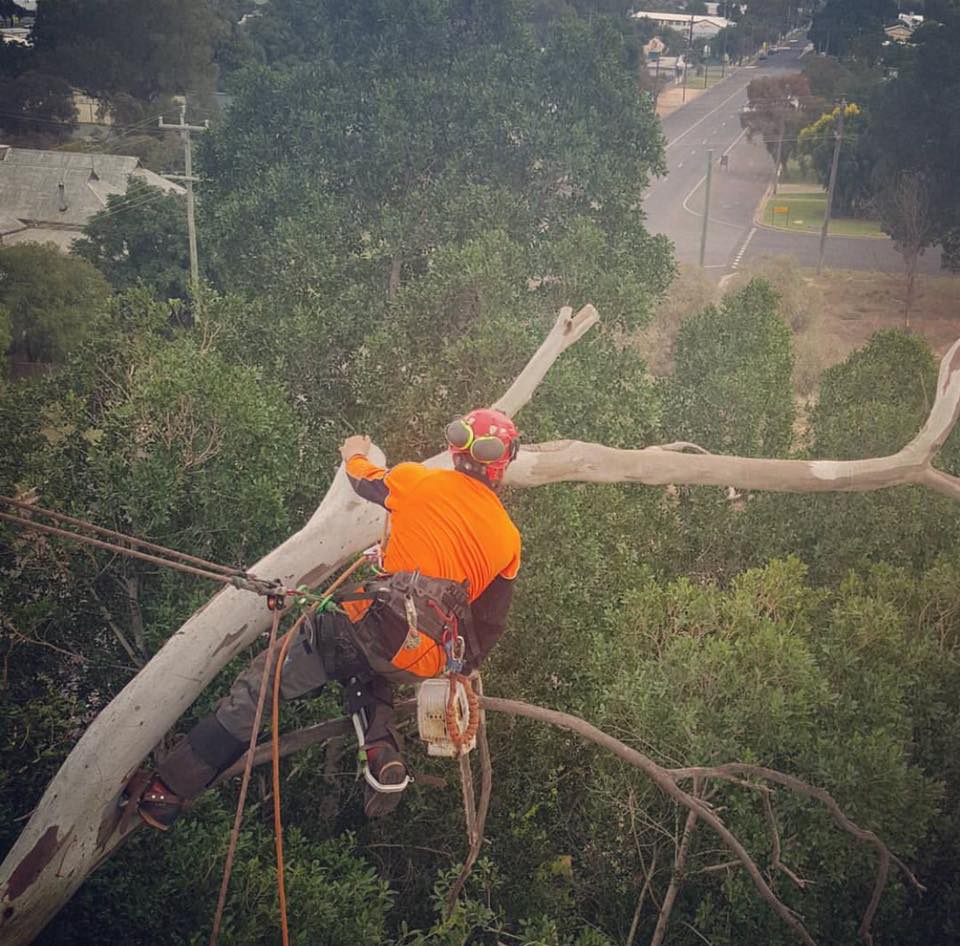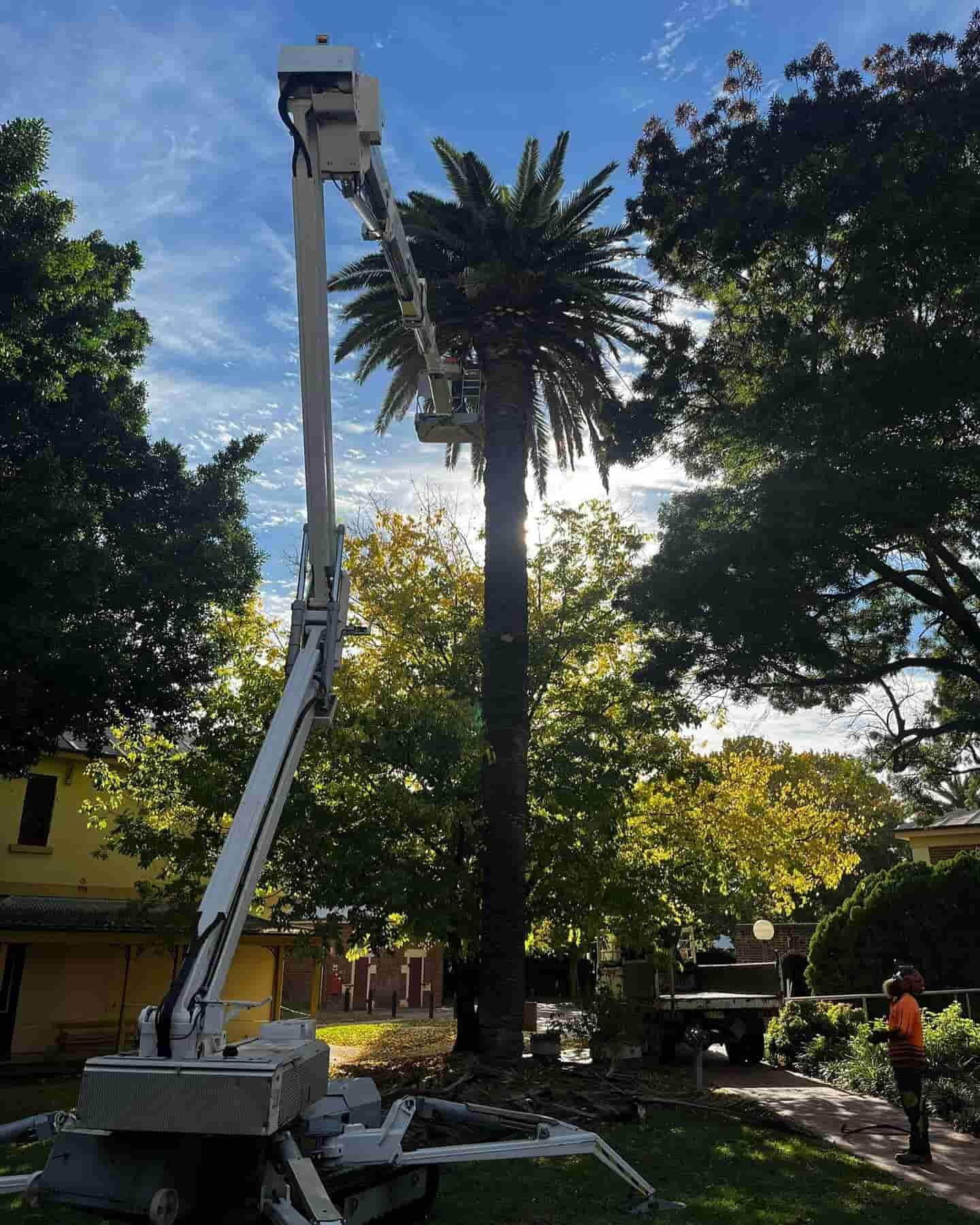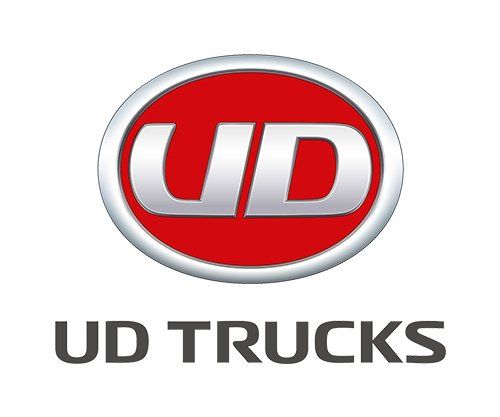8 Key Signs Your Tree May Need Removing
A1 Tree Services NSW • August 20, 2025
It’s easy to overlook the trees in our yards—until something goes wrong. While trees offer shade, structure, and serenity, they can also become unstable, diseased, or dangerously placed over time. Understanding when a tree needs to be cut down isn’t always obvious to the untrained eye. What may seem like a harmless lean, a small patch of fungi, or a bit of dieback might actually be a red flag for larger issues beneath the surface.
Whether you’re concerned about safety, property damage, or the health of nearby vegetation, knowing the key signs that indicate a tree should be removed is crucial. Let’s explore the most common warning signals so you know when to remove a tree.
1. Leaning Trees: When Upright Is Just a Memory
A tree’s natural vertical posture is maintained by healthy roots and balanced growth. When a mature tree begins to lean, particularly if it didn’t always do so, it may be signalling structural instability.
Leaning often results from root damage, erosion, or high winds. While some trees grow with a natural tilt, sudden or progressive leaning should never be ignored. An arborist can determine whether the tree poses an immediate threat or requires removal to prevent future hazards.
- Lean greater than 15 degrees from vertical is often a cause for concern
- Soil cracked or heaving on one side of the base may indicate root failure
- Leaning toward buildings, fences, or driveways increases risk
- Recent storm or ground movement can rapidly worsen existing lean
2. Dead or Dying Branches: Not Just Unattractive—Potentially Dangerous
Deadwood in the canopy isn’t just a cosmetic issue. It can signal that the tree is under stress or declining health, especially if dieback is spreading or concentrated in the upper branches.
Large dead branches may drop during wind events, causing damage to people or property. In these cases, pruning may not be sufficient—removal could be the safer long-term solution, particularly if the tree’s structure is compromised.
- Brittle twigs that snap easily or lack foliage
- Large dead limbs overhanging roofs, pathways, or cars
- Canopy thinning or uneven leaf coverage
- Bark peeling or falling from upper limbs
3. Mushrooms or Fungi at the Base: A Silent Alarm
Fungal growth around the trunk base may look harmless, but it can indicate internal rot or decay. These organisms thrive on decomposing wood, and their presence is rarely a good sign.
By the time fungi appear, decay may already be advanced inside the trunk or root system. This compromises the tree’s structural integrity and may require urgent removal to eliminate the risk of collapse.
- Mushrooms, bracket fungi, or conks growing at soil level
- Soft or spongy bark near the base
- Wood that crumbles easily or smells musty
- Signs of internal cavities or hollowing
4. Proximity Peril: Trees Encroaching on Infrastructure
As trees grow, their branches and roots may extend into areas that threaten built structures. This includes homes, fences, underground plumbing, and overhead powerlines.
While regular pruning can sometimes manage growth, there comes a point where the proximity becomes a risk. Invasive roots can crack driveways and disturb pipes, while overhanging limbs may cause damage during storms.
- Roots lifting pavement, paths, or building foundations
- Branches rubbing against roofs or guttering
- Trees planted too close to fences or boundaries
- Encroachment on utility lines or roadways
5. Hollow or Split Trunks: Deceptively Fragile
A tree with a hollow or split trunk may look robust from the outside—but internally, it can be structurally unsound. Hollows form when decay eats away at the inner wood, while vertical splits weaken the tree’s ability to support its own weight.
Both conditions make trees more likely to fail during storms or strong winds, especially if they are tall or wide-spreading.
- Visible cavity openings or internal decay
- Vertical splits running along the trunk
- Hollow sounds when tapped with a tool
- Excessive sway or movement during wind
6. Pest or Disease Damage: When Invaders Undermine Safety
Pests and diseases can severely affect a tree’s health, sometimes beyond recovery. Borers, termites, and fungal pathogens often go unnoticed until the damage is extensive.
Infested or diseased trees are weakened and may spread issues to neighbouring vegetation. Removal helps contain the spread and avoids the dangers posed by structurally compromised trees.
- Small holes in bark or signs of boring insects
- Excessive sawdust or frass at the base
- Sudden leaf drop or discolouration
- Signs of cankers, wilting, or sap oozing from wounds
7. Root Heaving or Cracked Soil: The Ground Speaks
Although roots are usually hidden, they can reveal themselves subtly when things go wrong. Root heaving, where the soil lifts or cracks, may suggest shifting or severed roots—often a precursor to leaning or toppling.
Cracked concrete, disrupted garden beds, or exposed roots damaged by construction or mowing also raise concerns about the tree’s anchorage.
- Raised or uneven soil around the trunk
- Cracked pavement or driveway near the tree base
- Exposed roots that appear cut or decaying
- Sinkholes or depressions on one side of the tree
8. Overgrown Giants: When a Tree Outstays Its Welcome
Sometimes, a tree simply outgrows its space. What was once a modest sapling can become a dominant force that blocks light, overwhelms landscaping, or prevents new developments.
If pruning no longer manages its growth or the tree interferes with solar panels, powerlines, or usable yard space, removal may offer the best path forward.
- Dense canopy casting constant shade on gardens or lawns
- Tree encroaches on solar access or development zones
- Difficulty accessing outdoor spaces due to the root or branch spread
- Neighbours or councils requesting removal due to overgrowth
Ready to Remove That Risk?
At A1 Tree Services NSW, we help you assess and manage potentially hazardous trees with care and professionalism. Whether you're unsure if a tree can be saved or know it’s time to act, our team offers tailored tree removal in Dubbo that prioritises safety, compliance, and minimal disruption to your property.
We encourage you to
get in touch via our contact page or
give us a call to arrange an on-site consultation. Let’s make your property safer and your outdoor spaces more manageable.












